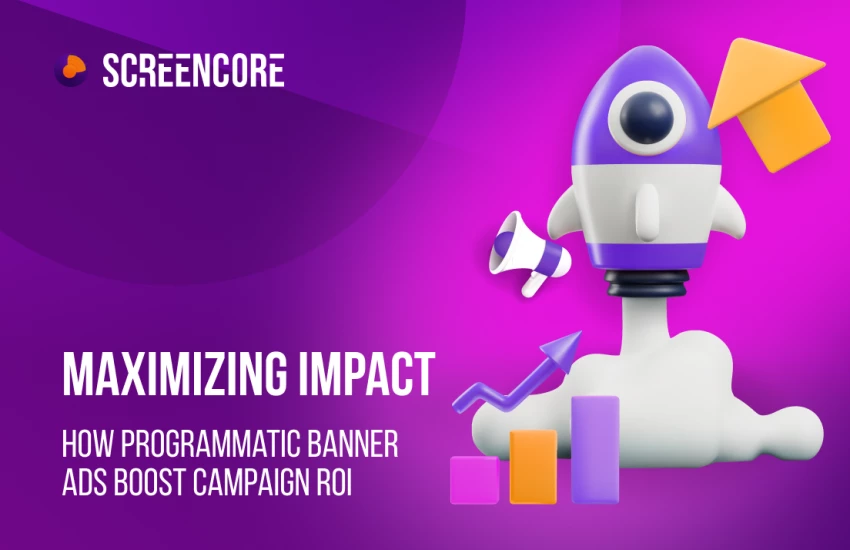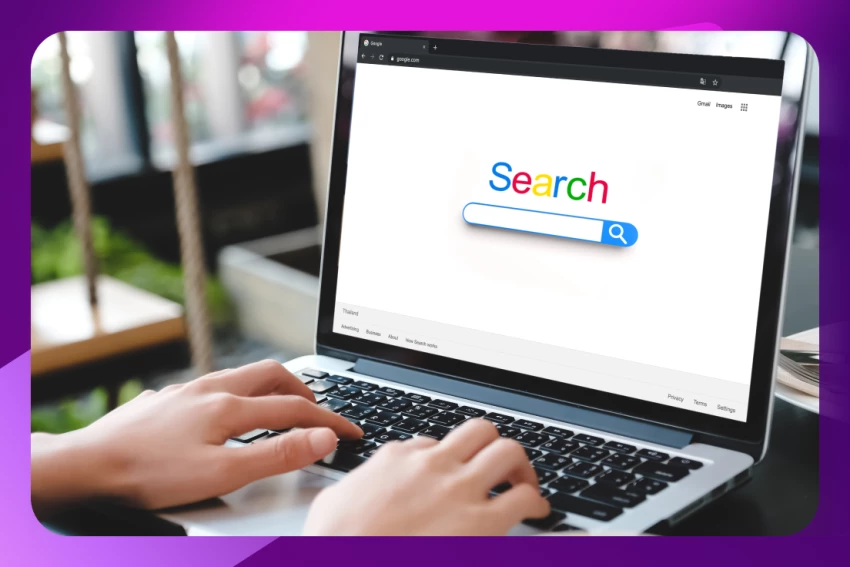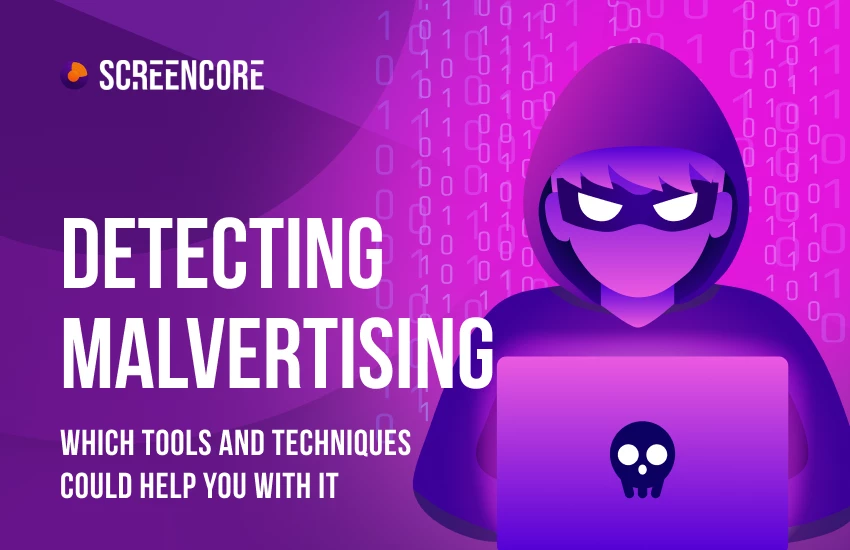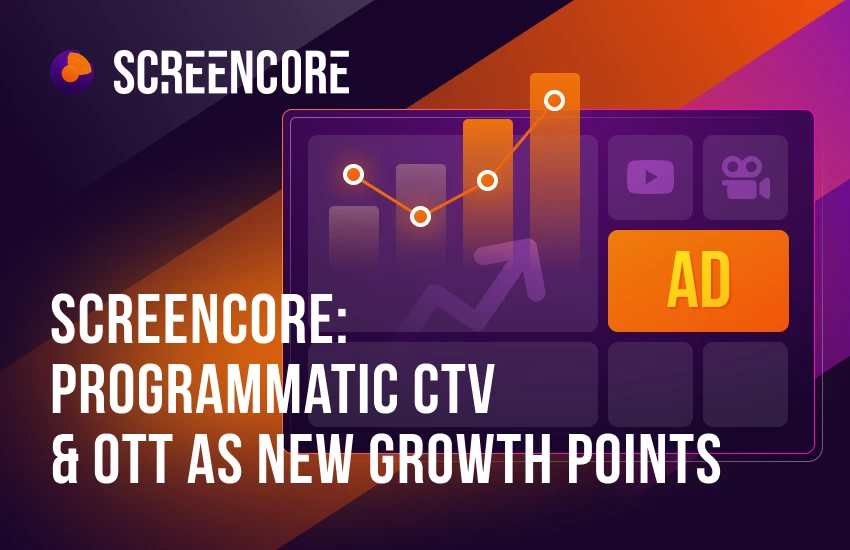Maximizing Impact: How Programmatic Banner Ads Boost Campaign ROI

Programmatic banner advertising has become a game-changer in digital marketing, offering brands a powerful, data-driven way to reach their target audiences with precision and scale. Unlike traditional ad placements, which often rely on manual processes, programmatic advertising uses automated technology and real-time bidding to deliver ads instantly to the right users at the right time. The results? Higher engagement, smarter spending, and measurable ROI.
Here’s a stat that underscores its impact: programmatic ad spending is expected to reach over $155 billion globally by 2025, accounting for nearly 90% of all digital display ads. This growth reflects the trust marketers place in programmatic’s efficiency and performance.
Research shows that programmatic ads can achieve up to three times higher click-through rates compared to non-targeted ads, thanks to their ability to leverage audience data for hyper-relevant placements. Brands benefit from real-time data analysis, continuous campaign optimization, and dynamic targeting, allowing them to adapt ads to user behaviors and preferences on the fly.
With programmatic banner ads, marketers have the ultimate toolkit to maximize every dollar spent, making it a must-have strategy in today’s competitive digital landscape.
Key Benefits in Boosting Campaign ROI
ROI, or Return on Investment, is a financial gauge of how much profit you’re making relative to what you spend. Put simply, it shows whether your investment is paying off. A high ROI? Great – you’re getting more bang for your buck. A low ROI? You might be putting money in without seeing the payoff.

Key benefits of ROI-driven marketing include:
- Cost efficiency: Prioritizing ROI ensures that budgets are spent wisely, focusing on successful strategies and eliminating waste on underperforming ones, leading to greater profitability.
- Strategic focus: By honing in on revenue-generating campaigns, businesses make strategic decisions that better align with their financial goals.
- Enhanced accountability: ROI-driven marketing holds teams accountable by directly linking spending to outcomes, leading to more careful planning and execution.
- Data-driven decisions: With data as the backbone, this approach relies on facts over intuition. Campaigns are adjusted based on real results, increasing the likelihood of success and enabling marketers to optimize strategies based on what truly works.
Optimizing Ad for Maximum ROI
Banner ads remain a staple in digital marketing, but with today’s highly competitive landscape, simply displaying ads isn’t enough to see real returns. The rise of programmatic advertising, dynamic creative options, and advanced data analytics has changed the game, allowing brands to make their banner ads smarter, more personalized, and better targeted than ever. In this environment, optimizing banner ads for maximum ROI is no longer a nice-to-have – it’s essential.
Maximizing ROI means crafting ads that do more than just get seen; they need to connect, engage, and ultimately drive action. To achieve this, it's important to focus on creating ads that align with specific goals, target the right audience, adapt to multiple devices, and continuously improve through testing and data analysis.
1. Define clear goals and KPIs
Identify what you want to achieve with your banner ads—whether it’s clicks, conversions, or brand awareness. Establish measurable KPIs, like click-through rate (CTR), conversion rate, and cost per acquisition (CPA), to track and measure success effectively.
2. Utilize targeted audience segmentation
Leverage data to segment your audience based on demographics, behavior, interests, and online activity. Use programmatic platforms to dynamically target specific audiences, ensuring that your ads reach users who are most likely to convert.
3. Use dynamic creative optimization
Employ DCO to automatically tailor ad visuals and messaging for different audience segments in real-time. Test different headlines, images, and calls-to-action (CTAs) to see which combinations drive the most engagement and conversions.
4. Craft compelling and relevant ad designs
Keep ad design simple but eye-catching. Use high-quality visuals and limit text to make ads easy to digest. Make sure your branding is clear and consistent, and ensure the ad design aligns with the landing page to maintain a seamless experience.
5. Optimize for mobile and cross-platform compatibility
Design banner ads that are responsive and look great on mobile, tablet, and desktop to maximize reach. Optimize file size and format for fast loading on all devices, as slow-loading ads can hurt engagement.
6. Incorporate strong, actionable CTAs
Use clear, persuasive calls-to-action that encourage users to click, such as “Shop Now,” “Learn More,” or “Sign Up Today.” Position the CTA prominently within the banner and ensure it contrasts with the background to make it stand out.
7. Leverage retargeting for better conversions
Implement retargeting to reach users who have previously interacted with your brand but didn’t convert. Use tailored ads with reminders, incentives, or product recommendations to re-engage these potential customers.
8. A/B test regularly
Test different elements – like headlines, colors, images, and CTAs – to determine which versions drive the best results. Run A/B tests continuously to adapt to audience preferences and refine your approach based on performance data.
9. Set frequency caps to avoid ad fatigue
Limit the number of times a user sees your banner ad to prevent ad fatigue and maintain user interest. Use frequency capping to strike a balance between effective exposure and avoiding oversaturation.
10. Track and analyze performance data
Monitor key metrics regularly, such as CTR, conversions, and engagement rate, to identify areas for improvement. Use insights from data to make adjustments to targeting, design, or ad copy to continuously improve ROI.
11. Utilize AI and machine learning for real-time optimization
Leverage AI-driven tools to automatically adjust bids, audience targeting, and ad placements based on real-time performance. Machine learning algorithms can predict optimal ad placements and fine-tune your campaign for maximum effectiveness.
By implementing these strategies, you can refine your banner ads to be more targeted, engaging, and effective, leading to a stronger ROI and maximizing your ad spend.
Challenges in Banner Advertising for Better ROI
Let’s explore the key challenges that marketers encounter with banner advertising and offer practical solutions to overcome them. By addressing these issues, brands can enhance their ad performance, improve engagement rates, and ultimately increase ROI.

1. Banner Blindness
- Challenge: Many internet users have learned to tune out banner ads, a phenomenon known as “banner blindness.” This can lead to low engagement and wasted ad spend.
- Solution: Combat banner blindness with visually engaging, interactive designs and by placing ads in unconventional spots. Native and contextual ads that blend naturally with content can also boost interaction and engagement.
2. Ad Fatigue
- Challenge: Repeated exposure to the same ad can lead to ad fatigue, where users lose interest and engagement rates drop.
- Solution: Use frequency capping to limit how often a user sees an ad. Rotate ad creatives regularly to keep content fresh, and leverage dynamic creative optimization (DCO) to tailor ads based on audience behavior and preferences in real-time.
3. Low Click-Through and Conversion Rates
- Challenge: Banner ads often struggle with low click-through and conversion rates, especially if the ad creative or targeting isn’t compelling enough.
- Solution: Improve targeting through audience segmentation and personalized messaging. Conduct A/B testing on various design elements and calls-to-action (CTAs) to identify what resonates best with different audience segments.
4. Ad Blockers
- Challenge: A significant number of internet users use ad blockers, which prevent banner ads from displaying, reducing the potential reach of campaigns.
- Solution: Consider non-intrusive ad formats that blend more naturally with content and are less likely to be blocked. Explore alternatives like in-app and native ads to reach audiences who use ad blockers.
5. Difficulty in Measuring ROI
- Challenge: Measuring the exact ROI of banner ads can be challenging, especially when there’s no direct link from ad click to conversion.
- Solution: Define clear metrics, such as CTR, conversion rate, and cost per acquisition (CPA), to assess campaign success. Use multi-touch attribution models to get a comprehensive view of how banner ads contribute to conversions over time.
Future Trends
In the future, banner advertising will be heavily influenced by trends like AI and machine learning, which are set to revolutionize targeting, bidding, and creative optimization. These technologies will analyze vast amounts of data in real time to deliver more personalized, engaging ads. As a result, AI-driven campaigns are expected to improve ROI significantly by increasing engagement rates and conversions through smarter ad placements and tailored content.
Dynamic Creative Optimization is another trend shaping banner advertising. This technology personalizes ads by using data such as demographics, browsing behavior, and location to adapt visuals and messages instantly. DCO’s ability to tailor content for each user in real time boosts click-through rates and conversions, making ad spend more effective and increasing overall ROI.
The integration of banner ads with CTV and multi-channel campaigns represents an exciting development, allowing brands to reach audiences as they move between devices. Multi-channel strategies enhance brand visibility and provide a seamless customer experience, strengthening brand recall and driving conversions across touchpoints. By capturing attention through CTV and other channels, advertisers can extend their reach and improve ROI.
As users demand more engaging ad experiences, banner ads are evolving from static displays to interactive and rich media formats, incorporating animations, videos, or interactive elements like mini-games and quizzes. These immersive experiences stand out from traditional ads, keeping users engaged longer, increasing click-through rates, and boosting ROI through higher engagement.
Privacy regulations and the phasing out of third-party cookies are pushing advertisers toward first-party data, which allows brands to build more targeted and compliant campaigns. First-party data enables highly personalized ads using information users have willingly shared, which can enhance engagement and trust. By relying on direct, compliant data sources, advertisers can build long-term customer relationships and create ads that resonate, leading to sustainable ROI growth.
Programmatic advertising is also becoming more transparent, with advancements in brand safety and verification tools allowing advertisers greater control over ad placements. Enhanced brand safety ensures ads appear in quality environments, reducing wasted ad spend on unsuitable sites and building audience trust, which positively impacts ROI by ensuring better ad visibility and relevance.
Contextual advertising is rising as well, especially with privacy concerns restricting user tracking. Contextual ads align with the content users are already engaging with, making the ads feel more relevant. This method can lead to higher click-through and conversion rates, ultimately making ad spend more efficient and improving overall ROI.
Incorporating these trends will enable advertisers to maximize the effectiveness of banner ads by driving engagement, increasing conversions, and enhancing trust. AI, personalization, cross-device strategies, and privacy-conscious advertising are key to ensuring a high return on investment for banner advertising in the evolving digital landscape.
Conclusion
Programmatic banner advertising offers brands a powerful pathway to higher ROI through precise targeting, real-time optimization, and data-driven insights. By leveraging strategies like dynamic creative optimization, audience segmentation, and A/B testing, marketers can transform banner ads into high-impact tools that engage audiences and drive conversions. While challenges like banner blindness and ad blockers exist, innovative approaches – such as personalized messaging and interactive formats – help overcome these barriers, enhancing engagement and boosting ROI.
As the industry evolves, Screencore stays ahead of the curve by embracing trends like AI-driven optimization, rich media formats, and privacy-focused advertising solutions. This forward-thinking approach helps us make the most of their advertising budgets, delivering measurable and impactful results in an ever-changing digital landscape

